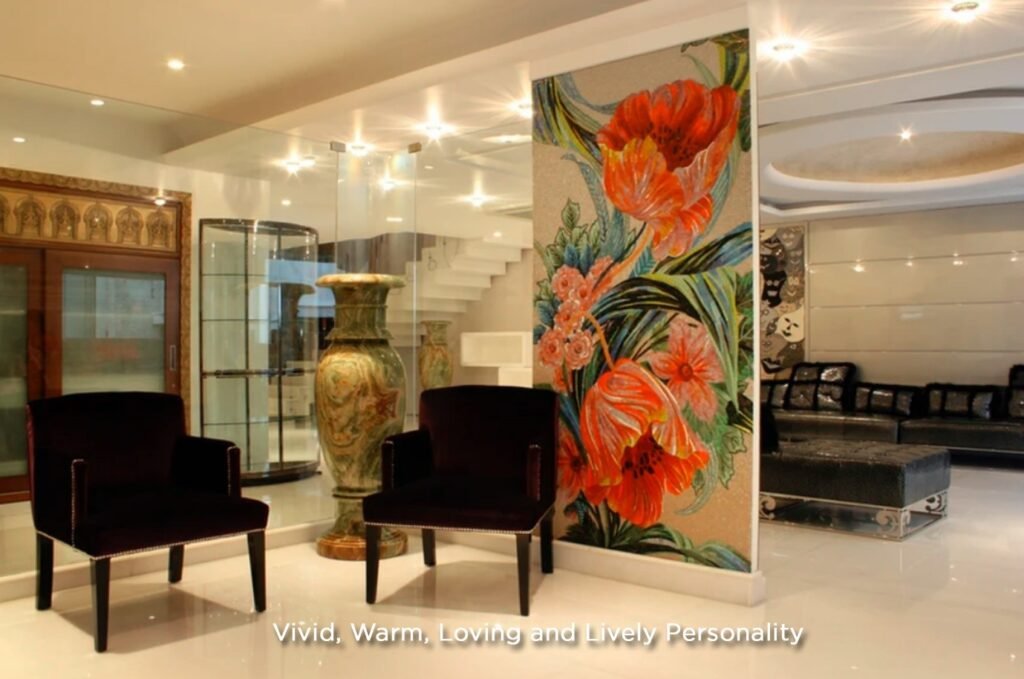Modern architecture is often celebrated through its iconic forms, technological innovations, or symbolic gestures. Yet some of the most impactful climate strategies are not flashy or photogenic; they work quietly, almost invisibly. They are the “unsung heroes” of climate resilience cool roofs, responsive facades, shading devices, courtyards, and passive ventilation systems. For an architect, these …
Modern architecture is often celebrated through its iconic forms, technological innovations, or symbolic gestures. Yet some of the most impactful climate strategies are not flashy or photogenic; they work quietly, almost invisibly. They are the “unsung heroes” of climate resilience cool roofs, responsive facades, shading devices, courtyards, and passive ventilation systems.
For an architect, these interventions are far from ornamental. They are essential design tools that reduce energy loads, increase human comfort, and extend the lifespan of buildings. What makes them fascinating is not their novelty, but their persistence: many of these strategies are rooted in vernacular wisdom, now reframed with modern technology.
In an era when architecture is under immense pressure to reduce its carbon footprint, such understated solutions represent a profound shift. They remind us that climate responsibility often hides in the details sometimes as simple as the color of a roof or the angle of a sunshade.
Why the “Quiet” Strategies Matter
- Energy Demand and Cooling Loads
In India, cooling accounts for nearly 60% of electricity use in commercial buildings and up to 40% in residential. With climate change pushing summer temperatures beyond survivable limits, demand for air-conditioning is soaring. Passive design strategies like reflective roofs and ventilated facades can reduce indoor temperatures by 2–5°C, cutting cooling loads by 15–30%.
- Carbon and Cost
Unlike high-tech mechanical systems, passive systems often require little operational energy and minimal maintenance. They save both carbon and cost over the lifecycle of a building.
- Equity
Passive strategies democratize comfort. They provide relief to populations who cannot afford continuous mechanical cooling. A whitewashed roof in a low-income settlement can be just as effective, in relative terms, as a smart façade in a high-rise. - Cultural Continuity
Courtyards, jalis, verandahs, and shading screens are not just climate devices but cultural artifacts. Reintegrating them into contemporary design respects tradition while ensuring resilience.
The Unsung Heroes of Climate-Responsive Architecture
1. Cool Roofs
A cool roof reflects sunlight and emits absorbed heat more efficiently than a standard surface. Traditionally, Indian homes employed lime plaster, china mosaic, or terracotta tiles on roofs to reflect solar radiation. Today, reflective paints, coatings, and modular tiles are modern equivalents.
- Case in point: The Cool Roof Program in Hyderabad has begun painting thousands of roofs white to mitigate urban heat island effects. This large-scale initiative owes its effectiveness to a principle as old as whitewashed mud houses in Rajasthan.
2. Smart Facades
Facades mediate between indoor comfort and outdoor climate. Responsive skins, double facades, operable louvers, and ventilated screens reduce glare, admit daylight, and allow passive ventilation.
- Jean Nouvel’s Institut du Monde Arabe (Paris) with its camera-like apertures that dilate with daylight set the precedent for dynamic facades.
- Closer to home, Morphogenesis (Manit Rastogi and Sonali Rastogi) has developed innovative facades in projects like the Pearl Academy, Jaipur. The building’s double-skin jaali facade draws inspiration from traditional Rajasthani screens, cutting heat gain while providing filtered light.
3. Courtyards and Ventilation Shafts
Courtyards have long been a staple of Indian architecture. They promote stack ventilation, allow daylight penetration, and act as social condensers.
- B.V. Doshi’s IIM Bangalore is a masterclass in shaded courtyards and interstitial spaces. The courtyards are not only climatic buffers but also academic commons.
- Rahul Mehrotra’s campus projects often employ open-to-sky courtyards that double as climate moderators and gathering spaces.
4. Shading Devices
From overhangs to brise-soleil, shading devices are the most direct defense against solar gain. They are deceptively simple but profoundly effective.
- Charles Correa perfected the art of shading in tropical modernism. At Kala Academy, Goa, overhangs and pergolas create outdoor corridors that remain usable despite the region’s intense sun.
- Vernacular precedents deep verandahs in Kerala, projecting balconies in Rajasthan show how shading was woven into daily life long before the word “sustainability” was coined.
5. Green Walls and Roof Gardens
While more resource-intensive, vegetative surfaces insulate buildings and reduce heat islands. In dense cities like Mumbai and Bangalore, green facades also provide psychological relief from the built mass.
- Karan Grover’s CII-Sohrabji Godrej Green Business Centre in Hyderabad (one of India’s early LEED Platinum buildings) employs green roofs and walls alongside other passive strategies.
6. Material as Climate Tool
Materiality itself can act as climate moderator. High thermal mass materials (stone, earth) slow heat gain, while porous, breathable surfaces (lime, terracotta) promote comfort.
- Anupama Kundoo consistently employs lightweight ferrocement and terracotta modules for thermal comfort. Her Wall House integrates climate-responsiveness without mechanical dependence.
- Vinu Daniel’s Wallmakers combine earth construction with innovative shading and ventilation to produce low-energy yet striking buildings.
The Beauty of Subtlety
Architects often confront the paradox that clients value the visible. A green wall is glamorous; a reflective roof coating, less so. Yet subtle climate strategies can have more profound long-term impacts than ostentatious ones. The architect’s challenge, therefore, is to render the invisible visible not through gimmickry, but through thoughtful detailing.
For instance:
- A projecting chhajja can be crafted into a sculptural element.
- A perforated screen can double as a cultural motif.
- A courtyard can serve as both climate buffer and ceremonial heart.
In each case, climate intelligence is folded into spatial experience.
Case Study 1: Pearl Academy, Jaipur (Morphogenesis)
Pearl Academy’s campus exemplifies the fusion of modern technology and traditional wisdom. Its double-skin façade, inspired by the Rajasthani jaali, cuts solar gain by 70%. An open-air courtyard at the core promotes ventilation, while the structure sits on a raised plinth that shields against flooding. The project demonstrates how passive strategies can form the architectural identity of a contemporary institution.
Case Study 2: IIM Bangalore (B.V. Doshi)
Doshi’s IIM Bangalore campus is celebrated for its labyrinthine courtyards, pergolas, and shaded corridors. The porous network creates microclimates across the site. Decades before energy modeling became standard, Doshi achieved thermal comfort through spatial intelligence. The campus remains a living example of how “unsung heroes” like shading and courtyards can sustain large institutions in a hot climate.
Case Study 3: Wall House, Auroville (Anupama Kundoo)
Kundoo’s Wall House demonstrates material-driven climate responsiveness. Terracotta fillers, ferrocement roofs, and carefully ventilated openings create a house that remains cool despite Auroville’s humid climate. Instead of relying on mechanical cooling, Kundoo’s detailing celebrates thermal comfort as design ethos.
Climate Heroes in Low-Cost Contexts
It is tempting to associate climate-smart strategies with large institutional or high-end projects. Yet the most compelling stories often come from modest contexts.
- Hunnarshala Foundation, Bhuj, works with communities to rebuild climate-responsive homes using mud walls, shaded verandahs, and ventilated courtyards. These strategies are affordable, replicable, and deeply resilient.
- Laurie Baker’s projects in Kerala, though decades old, continue to perform superbly with rat-trap bond walls, ventilated roofs, and courtyards all low-cost, high-performance devices.
These examples prove that climate responsibility is not a privilege of the wealthy but a universal right.
Challenges to Mainstream Adoption
Despite their effectiveness, these “unsung heroes” face hurdles:
- Perception of Tradition. Clients may view shading devices or courtyards as outdated, preferring sleek glass facades.
- Short-term Economics. Developers prioritize upfront cost savings over lifecycle performance.
- Urban Density. Courtyards and overhangs require space, often scarce in urban sites.
- Maintenance Myths. Passive systems are mistakenly assumed to be high-maintenance.
Architects must, therefore, not only design but also educate framing these strategies as aspirational rather than archaic.
The Future: From Passive to Active Hybrids
The next frontier lies in blending passive and active systems:
- Roof coatings integrated with photovoltaic panels.
- Facades that combine shading devices with sensors for real-time adjustment.
- Courtyards embedded with rainwater harvesting and cooling mist systems.
The principle remains the same: use passive first, then augment with technology where necessary.
Conclusion
In the architectural imagination, heroism is often associated with spectacle: dazzling towers, parametric facades, technological bravado. Yet in the quiet battle against climate change, true heroism is found in the ordinary. A whitewashed roof, a well-placed courtyard, a ventilated façade these are the devices that will determine whether cities remain habitable.
Architects such as B.V. Doshi, Charles Correa, Anupama Kundoo, Morphogenesis, Vinu Daniel, and many others remind us that resilience does not always announce itself. Sometimes, it whispers through shade, through breeze, through reflection.
For architects, the lesson is clear: celebrate the unsung heroes. They may not win awards for spectacle, but they win the far more urgent award of relevance keeping buildings livable in a heating world.
And in the end, what greater architectural triumph could there be?






